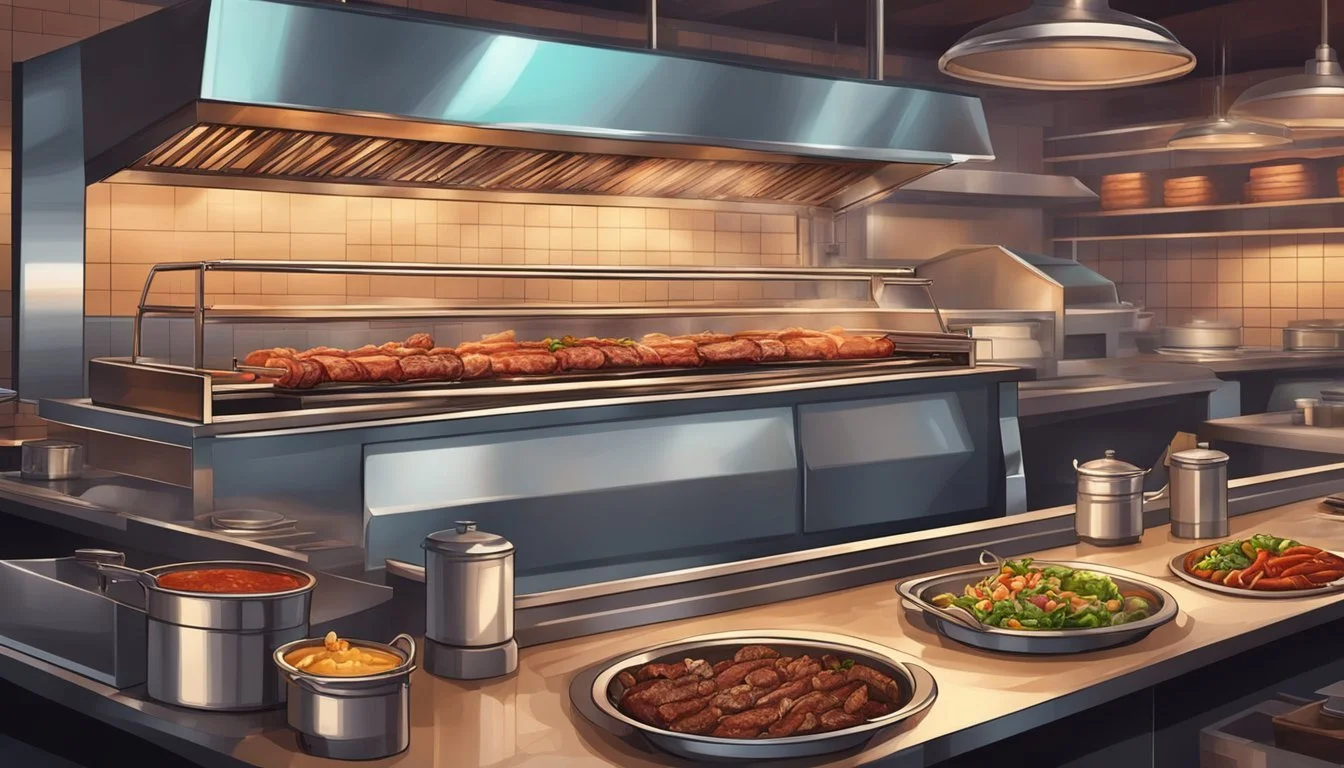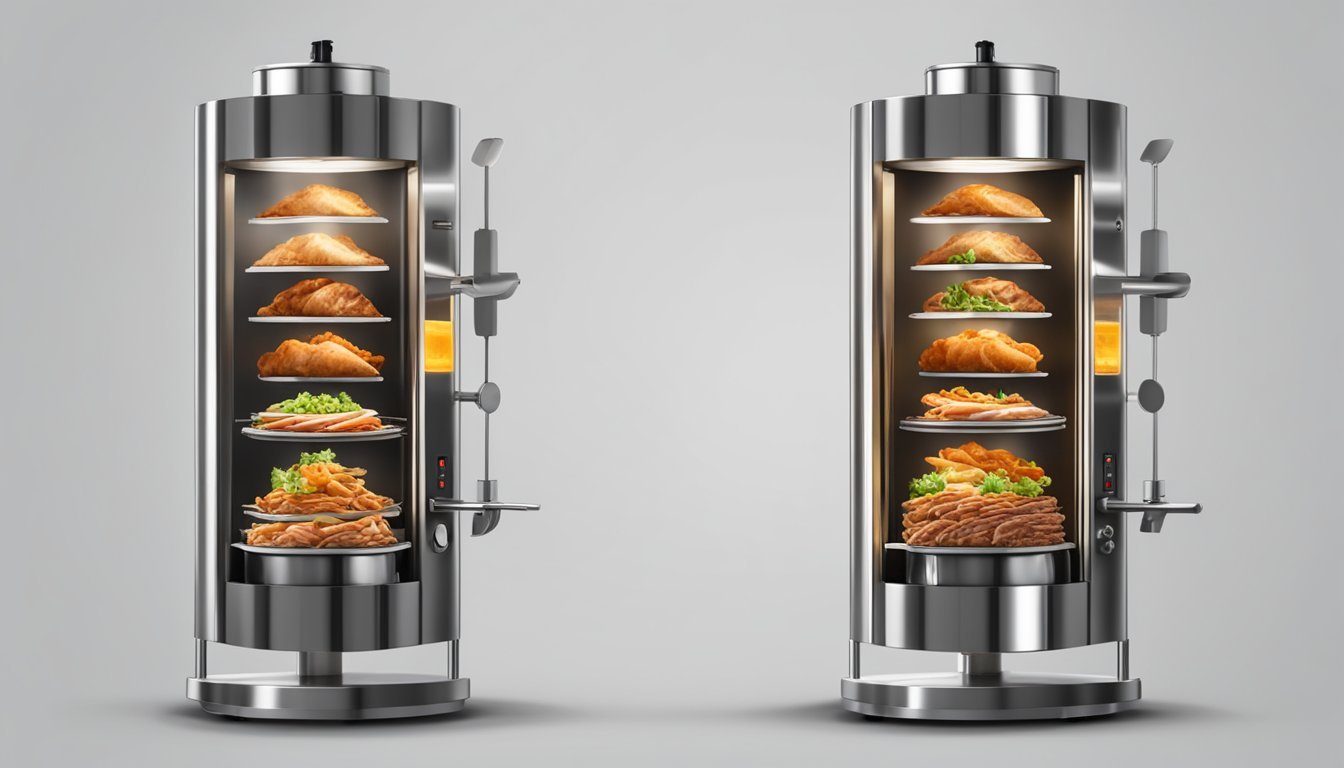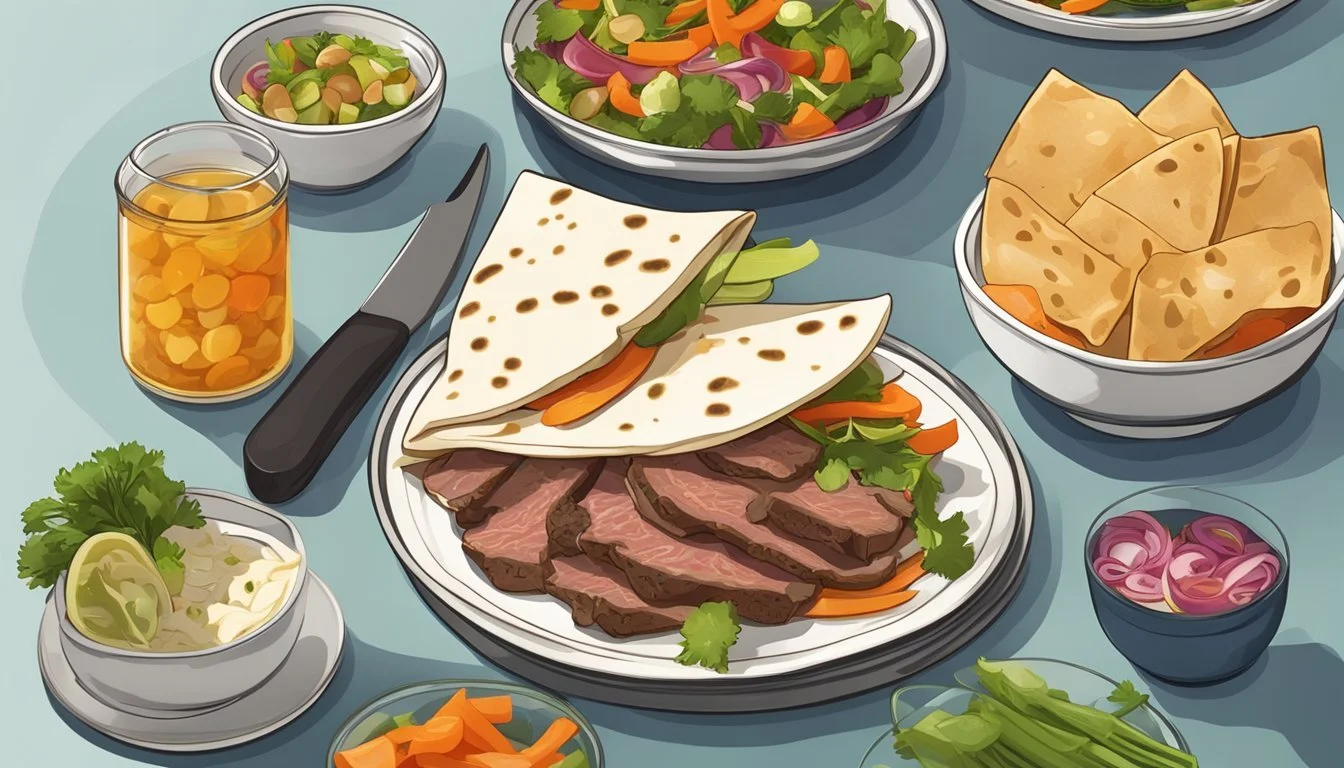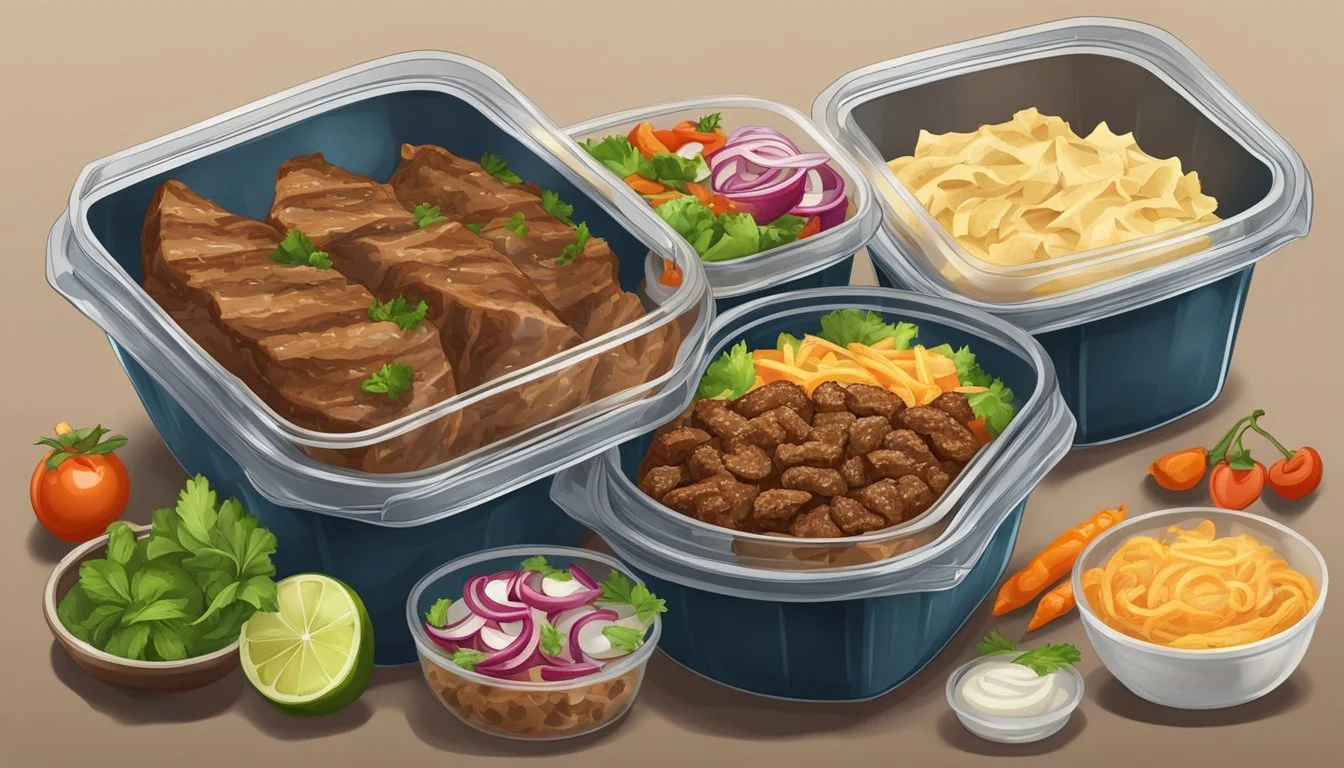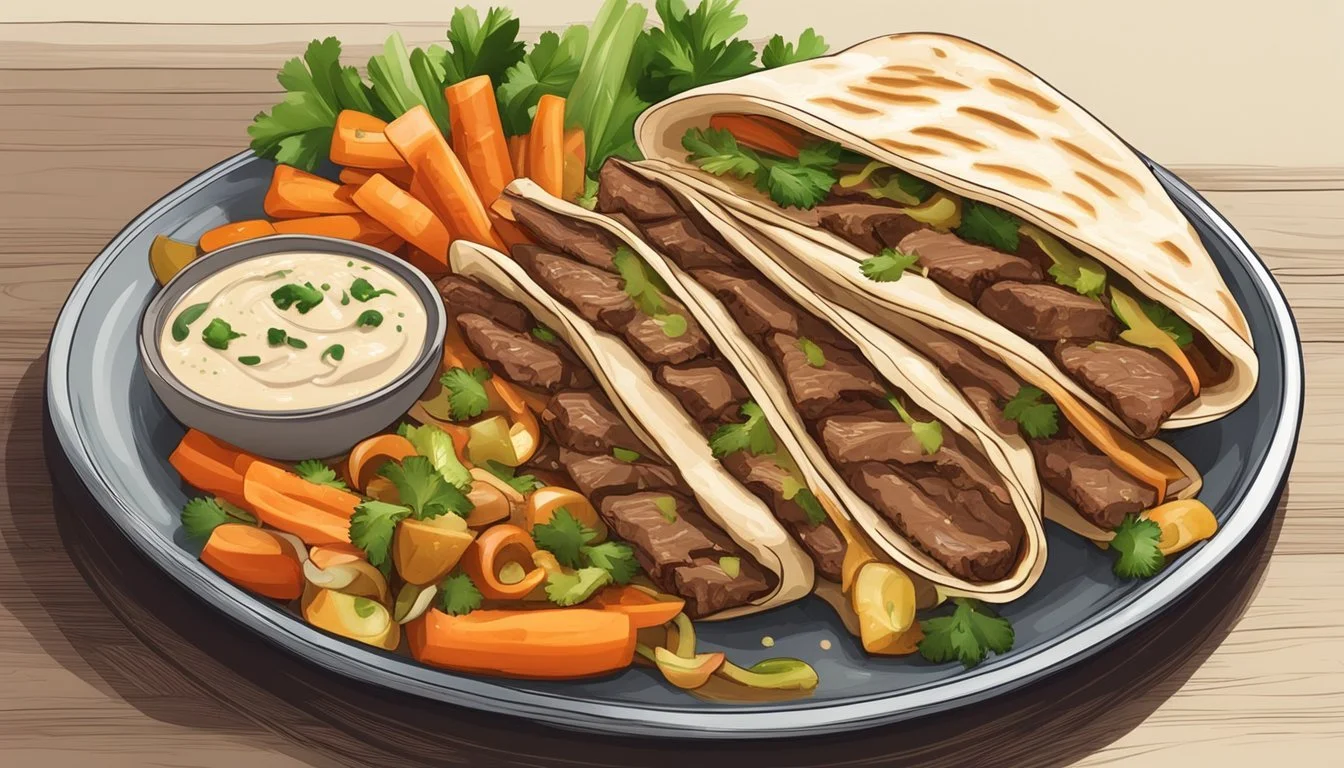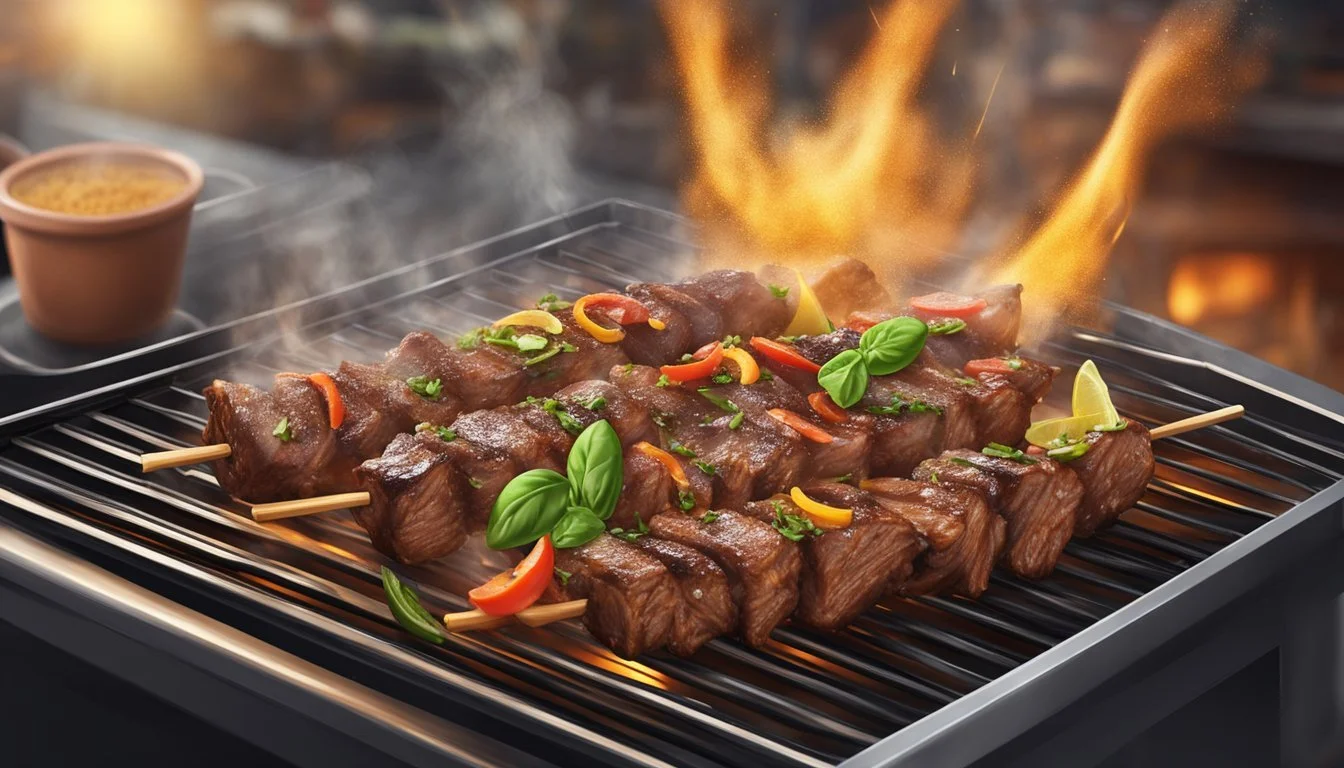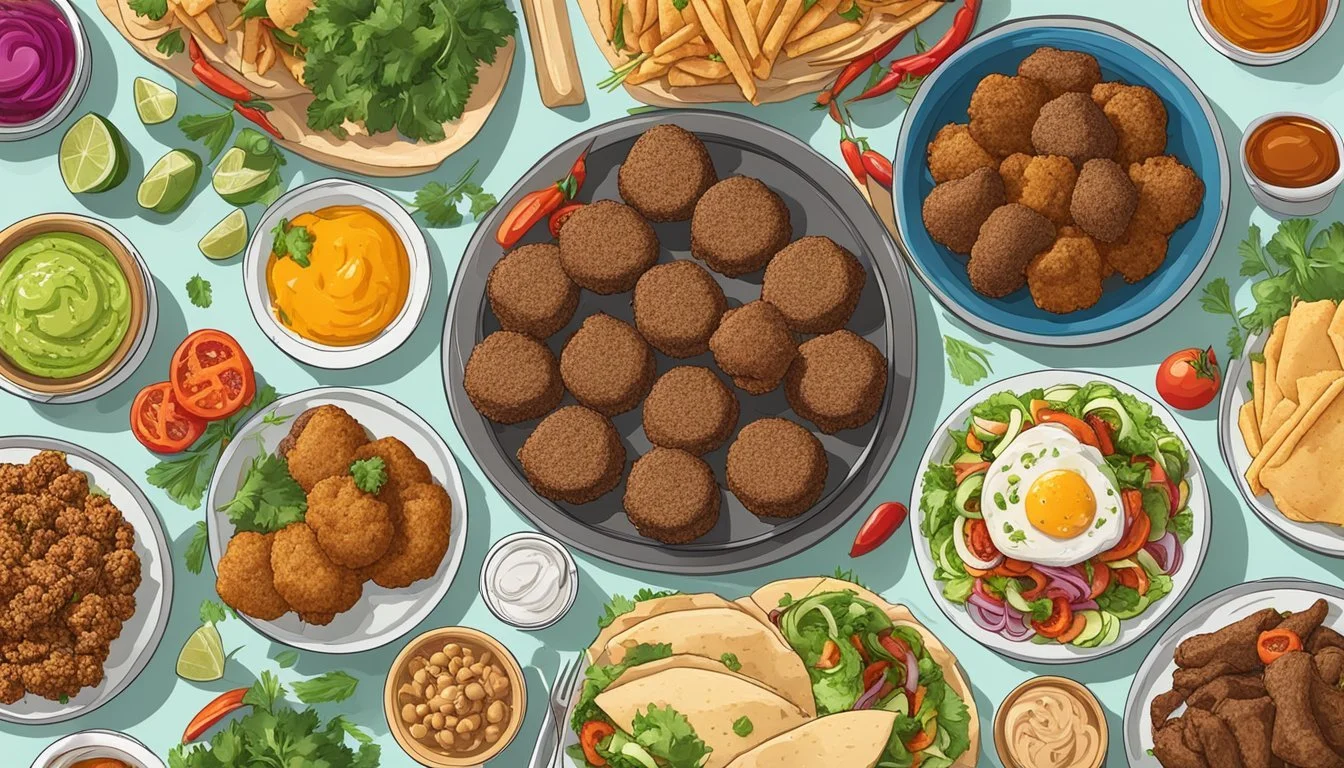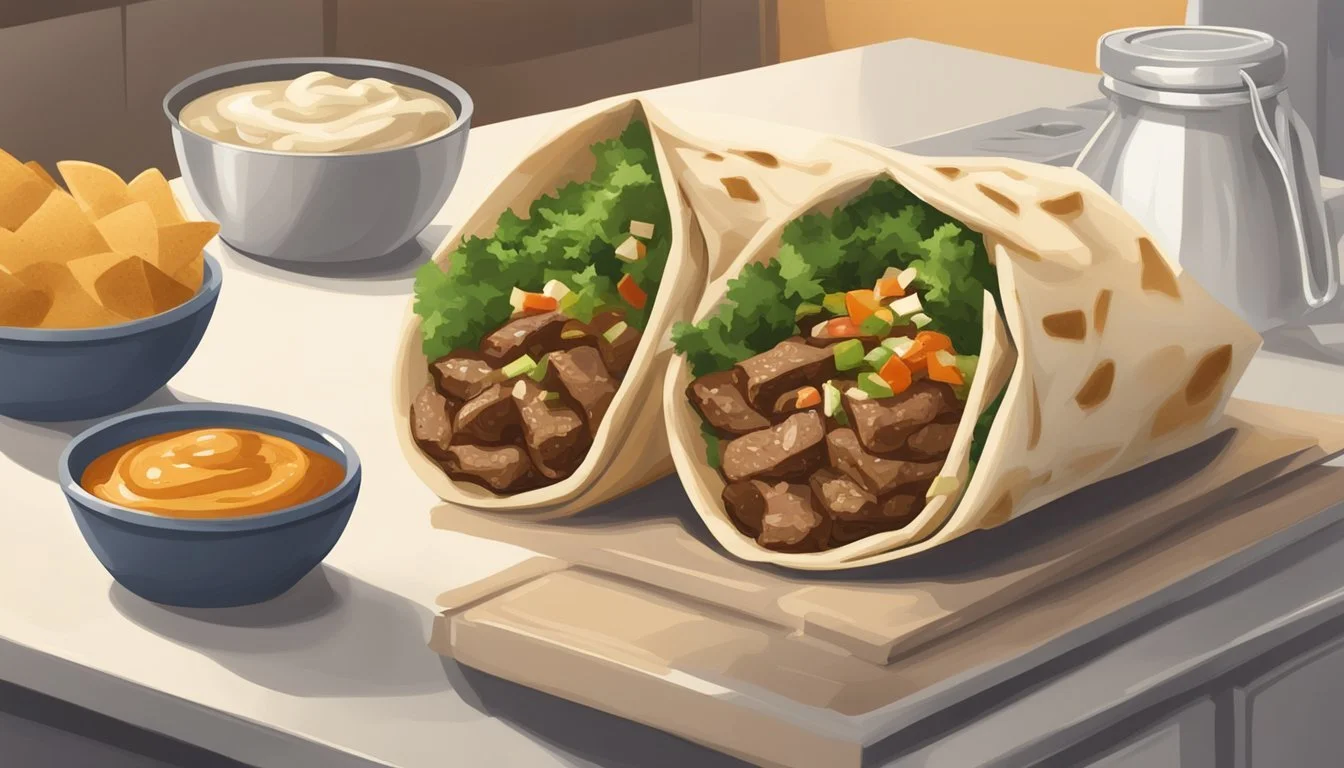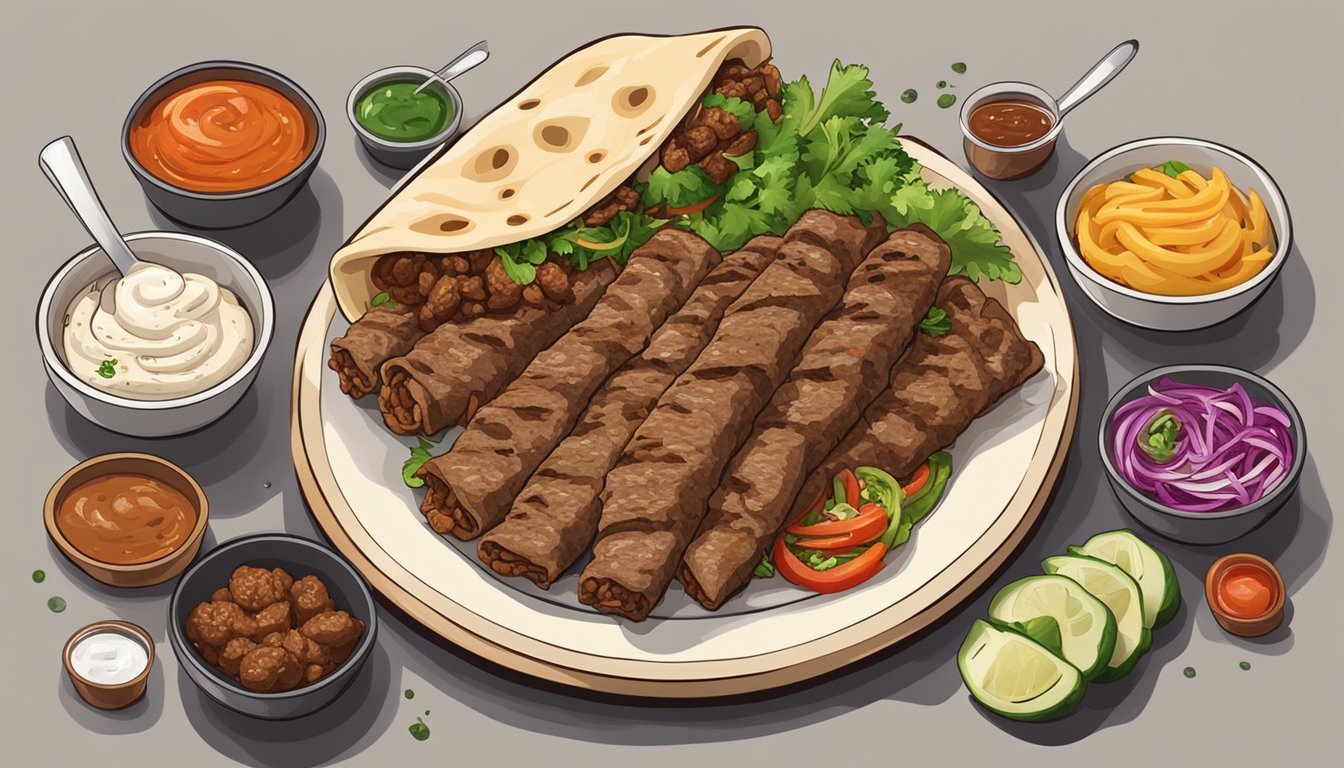How Long Does Beef Shawarma Last?
Storage Tips and Shelf Life
When it comes to savoring the rich flavors of beef shawarma, knowing how long it lasts is essential for preserving its quality and ensuring food safety. Properly refrigerated, cooked beef shawarma can last for 3-4 days, while freezing it at 0°F (-18°C) can extend its shelf life to 2-3 months. Unfortunately, leaving cooked beef shawarma at room temperature limits it to a mere 2 hours before it becomes unsafe to consume.
These timeframes are crucial for anyone looking to make the most out of their beef shawarma, whether you’re preparing a big batch for the week or looking to preserve leftovers from a delicious meal. Nothing beats the taste of freshly made shawarma, but understanding storage tips can help maintain its delectable flavor and texture.
Storing beef shawarma correctly ensures that you can enjoy its savory taste without the worry of spoilage. By following these guidelines, readers can relish the mouthwatering experience of beef shawarma at its best, meal after meal.
Understanding Beef Shawarma
Beef shawarma, a staple of Middle Eastern cuisine, consists of thinly sliced beef marinated in a blend of aromatic spices. This dish has rich historical roots and distinct key ingredients that contribute to its unique flavor and texture.
Historical Context
Beef shawarma is deeply embedded in Middle Eastern culinary traditions. Originating in the Ottoman Empire, it has evolved over centuries to become a beloved street food enjoyed across the region.
The term "shawarma" itself is derived from the Turkish word "çevirme," meaning turning, which refers to the traditional method of cooking meat on a vertical rotisserie. Historically, the use of spices and marinades was crucial to preserve the meat before refrigeration was common.
The preparation method has remained authentic, often cooked on a vertical spit and sliced thinly when served. This dish has not only spread within the Middle East but also gained international popularity, particularly in the Mediterranean region and beyond.
Key Ingredients
The key ingredients of beef shawarma are its spices and the beef itself. The spices typically include cumin, coriander, paprika, turmeric, and allspice, each adding depth to the marinade. Garlic and lemon juice are also essential, providing a great balance of flavors.
High-quality beef, often flank or sirloin, is essential to the dish, as it impacts the texture and taste. The meat is sliced thinly to absorb the marinade effectively. Onions and olive oil are often incorporated into the mix, enhancing the flavor during the marination process.
Yogurt is sometimes used in the marinade to tenderize the meat further, ensuring a juicy and flavorful end product. Marinating time varies, but a minimum of a few hours is recommended, with some recipes suggesting overnight marination for best results.
Preparation Techniques
Proper preparation of beef shawarma greatly influences its flavor and tenderness. This involves a meticulous marination process followed by precise cooking methods to ensure perfect results.
Marination Process
Marinating the beef is a crucial step to infuse it with rich flavors.
Ingredients: The marinade typically includes spices, lemon juice, crushed garlic, olive oil, and vinegar. A blend of shawarma spices is essential for authentic taste.
Beef Preparation: Use a high-quality cut like flank steak. Cut the meat into thin strips against the grain to maintain tenderness.
Mixing: Combine the meat with the marinade in a large bowl. Use your hands to ensure every strip is well-coated.
Refrigeration: Cover the bowl and refrigerate the marinated beef for a minimum of 2 hours. For deeper flavor, marinate for up to 24 hours.
Cooking Methods
The right cooking techniques are vital for achieving the ideal texture and taste.
Stovetop Cooking: Use a nonstick or cast iron skillet. Cook the beef strips in batches over medium-high heat, avoiding overcrowding to ensure even cooking. Brown the strips until the liquids evaporate and the meat starts to caramelize.
Grilling: For a smokier flavor, thread the marinated beef onto skewers. Use metal skewers or wooden ones soaked in water for 30 minutes. Grill over medium-high heat until cooked through, turning occasionally.
Oven Roasting: Preheat your oven to 270-300°F. Lay the beef in a baking dish with some marinade, cover tightly with foil, and bake for about 2 hours. After cooking, shred the meat before serving.
These techniques ensure your beef shawarma is flavorful and tender, enhancing the overall culinary experience.
Shawarma Components
Beef shawarma consists of various essential elements, from the meat itself to the condiments and breads used to serve it. Together, these components create a well-balanced and flavorful dish.
Accompanying Condiments
Condiments are crucial in enhancing the flavor profile of beef shawarma. Tahini sauce, a creamy sesame-based sauce, often finds its place alongside shawarma, adding a rich, nutty flavor. Fresh garlic mashed into a paste can add sharpness, while thinly sliced onion offers a crunch and a touch of sweetness.
Parsley is commonly used for its fresh, herbal notes, and tomatoes provide a juicy, acidic balance. Pickles or pickled turnips add a tangy, crunchy element that contrasts with the rich meat. Additionally, a mix of shawarma spices typically includes cumin, turmeric, salt, and pepper, adding warmth and complexity to the dish.
Breads and Wraps
The type of bread used in serving beef shawarma plays a significant role in the overall dining experience. Pita bread is a traditional choice — it is soft yet sturdy enough to hold the beef and condiments. Some variations use flatbread, which can be slightly thinner than pita but still effective in encasing the shawarma components.
In some preparations, pita is replaced with kuboos or lavash bread. These breads provide different textures and flavors, enhancing the overall dish. Additionally, wraps made from these breads can be grilled or toasted, giving them a lightly crispy texture that contrasts nicely with the tender beef and fresh vegetables.
Storage Guidelines
Proper storage of beef shawarma ensures it stays safe and maintains its quality. The key points include using airtight containers, maintaining specific temperatures, and utilizing appropriate storage methods for both refrigerating and freezing.
Refrigeration Lifespan
When storing beef shawarma in the fridge, it is essential to use an airtight container to prevent any bacterial contamination and maintain moisture.
The refrigerator should be set at 40°F (4.4°C). Cooked beef shawarma can last for 3-4 days under these conditions.
It's advisable to place the container in the coldest part of the fridge. This helps the meat stay fresh for as long as possible.
If the shawarma was marinated before cooking, this can sometimes extend its shelf life slightly due to the acidity of the marinade. However, checking for any signs of spoilage, like smell or texture changes, is crucial before consumption.
Freezing Methodology
For longer storage, freezing beef shawarma is a viable solution. Ensure the shawarma is wrapped tightly in plastic wrap and placed in a freezer-safe packaging.
Store it at 0°F (-18°C) to stop bacterial growth and preserve the meat's quality for a more extended period. Beef shawarma can remain in good condition in the freezer for 2-3 months.
To prevent freezer burn, use either vacuum-sealed bags or heavy-duty airtight containers. Label the packaging with the date of freezing to keep track of its lifespan.
When ready to serve, thaw the shawarma in the refrigerator and reheat it using a method that maintains its texture, such as an oven or stovetop.
Safety and Health
Beef shawarma must be stored and prepared correctly to avoid foodborne illnesses. Maintaining freshness and understanding its nutritional content help ensure a safe and healthy dining experience.
Maintaining Freshness
Proper storage of beef shawarma is essential to maintain its freshness. Refrigerating cooked beef shawarma ensures it lasts for 3-4 days. If it stays out at room temperature for more than 2 hours, it should be discarded.
Freezing beef shawarma can extend its shelf life to 2-3 months at 0°F (-18°C), but the texture might change slightly. When reheating, ensure the internal temperature reaches 165°F (74°C) to eliminate any bacteria.
Visible mold or off smells are clear signs of spoilage and should prompt immediate disposal.
Nutritional Content
Beef shawarma is rich in protein, essential for muscle repair and growth. However, it may contain high levels of fat and sugar due to marinades and sauces. It's important to consider these factors:
Protein: Vital for body functions, especially in active individuals.
Fat: While it provides energy, excess consumption can lead to health issues.
Sugar: May be present in sauces and can impact blood sugar levels.
Fiber: Adding vegetables can increase fiber content, aiding digestion.
Evaluating nutritional labels and ingredients can help manage a balanced diet.
Proper storage and awareness of nutritional values ensure a safe, healthy enjoyment of beef shawarma.
Serving Suggestions
Pita Pockets: Fill warm pita bread with beef shawarma, adding fresh toppings like tomatoes, cucumbers, and tzatziki sauce. This is an easy and popular way to enjoy Middle Eastern street food at home.
Wraps: Use large tortillas or flatbreads to create delicious wraps. Add pickles, onions, and fresh herbs for a flavorful experience.
Rice Bowls: Serve beef shawarma over a bed of fluffy rice. Top with hummus, salad, and a slice of lemon. This provides a complete meal that highlights the texture and seasoning of the shawarma.
Sandwiches: Make sandwiches using toasted bread or baguettes. Layer the beef shawarma with crispy lettuce, tomatoes, and a dollop of tzatziki. This is a homemade take on a classic gyro.
Falafel Pairing: Combine beef shawarma with falafel in a wrap or pita, offering a mix of tastes and textures. Add a side of fresh vegetables like cucumber and tomato for added crunch.
Each method offers a unique way to enjoy the delicious and versatile beef shawarma, highlighting its Middle Eastern street food roots.
Enhancing Flavors
Experimenting with diverse spices and garnishes can elevate the taste of beef shawarma. This guide covers key spice variations and additional garnishes to create a rich, well-rounded dish.
Spice Variations
Spices are essential for imparting complexity and depth to beef shawarma. A fundamental spice mix often includes ground cumin, paprika, ground coriander, and black pepper. Adding cinnamon and cloves can introduce a subtly sweet aroma, while cardamom and ginger offer warmth and slight pungency.
Mixing cayenne pepper with paprika increases heat, adding a fiery kick to each bite. Balance the spice with salt and a touch of ground clove for a harmonious blend. Adjust the proportions to match personal taste preferences and dietary requirements.
Additional Garnishes
Garnishes enhance both the visual appeal and taste profile of beef shawarma. Common choices include chopped parsley, which provides a fresh, grassy note. Adding a drizzle of tahini sauce or a dollop of yogurt can introduce creaminess, cutting through the rich spiciness.
Thinly sliced onions and tomatoes add crunch and juiciness. For added tang, a squirt of lemon juice can brighten up the flavors. Consider incorporating pickled vegetables, like cucumbers or turnips, to provide a vinegary contrast.
These simple additions can transform standard beef shawarma into a gourmet experience, making each bite deliciously complex.
Diversifying Shawarma Dishes
Exploring different meat selections like chicken, lamb, or various cuts of beef can elevate a typical shawarma dish. Complementing these with a range of vegetables and side options such as fries, salad, or rice ensures a more versatile and satisfying meal.
Alternative Meat Selections
Shawarma isn’t limited to beef; other meats can also offer delightful variations. Chicken shawarma is a popular alternative known for its tender and juicy texture when marinated with spices and a touch of lemon juice.
Lamb shawarma adds a rich flavor profile, especially when prepared with succulent cuts such as leg or shoulder, which are well-suited for slow cooking.
Beef shawarma can be made with different cuts like ribeye, sirloin, or flank steak. Cutting the beef into thin strips and marinating it well leads to a tender and flavorful dish.
Each meat brings its own unique taste and texture, enhancing the shawarma experience.
Vegetable and Side Options
Complementing shawarma with a variety of vegetables and sides can significantly diversify the dish. Classic accompaniments include slices of onions, tomatoes, and cucumbers, which add fresh and crisp elements. Pickled vegetables like turnips are also traditional additions that provide a tangy contrast.
For sides, fries are a favorite among many, offering a crispy texture that pairs well with the tender meat.
Salads, such as tabbouleh or fattoush, bring a refreshing balance, while rice dishes infused with spices make for a hearty and satisfying component.
Offering these combinations allows diners to customize their meal, making each shawarma experience unique and enjoyable.
DIY Tips and Tricks
These tips include detailed steps for homemade shawarma preparation and ideas for shawarma-inspired dishes using common ingredients and techniques.
Homemade Shawarma Preparation
Creating beef shawarma at home involves careful preparation to enhance flavor and texture. Start by preparing the marinade, which includes shawarma seasoning, ¼ cup of olive oil, ¼ cup of white wine vinegar, and the zest and juice of one lemon.
Mix these ingredients thoroughly to ensure an even coating. Use the marinade to tenderize the beef by combining it with slices of the meat in a large mixing bowl.
Refrigerate the meat for at least 2 hours or overnight for a stronger flavor. This allows the spices to permeate the beef fully. Cooking methods include using a rotisserie, an oven, or a stovetop. Ensure the beef is sliced thinly against the grain to maintain tenderness.
Making Shawarma-Inspired Dishes
Shawarma-inspired dishes can be as diverse as your creativity allows. Use the marinated beef to create various meals like shawarma wraps, salads, or bowls.
For shawarma wraps, use pita bread or flatbreads, and fill them with cooked beef, fresh vegetables, and tahini or garlic sauce.
For a healthier option, create a shawarma bowl with a base of rice or quinoa, topped with beef, mixed greens, cucumber, tomato, and a dollop of yogurt. These variations not only provide different textures and flavors but also make use of the same marinated and cooked beef, offering a versatile culinary experience.
Cultural Impact and Popularity
Shawarma has carved a significant place in global cuisine due to its rich history and widespread appeal. Its influence spans from Middle Eastern street food origins to its presence on social media platforms.
Global Influence
Shawarma, a staple of Middle Eastern street food, has crossed borders and gained popularity worldwide. Originating as a traditional street food, its variations using beef, chicken, and lamb cater to diverse tastes.
Since the 1970s, major cities like New York and Chicago have embraced shawarma, making it a common sight in street food markets and restaurants. This spread has turned shawarma into a symbol of culinary fusion, blending Middle Eastern flavors with global preferences.
Restaurants around the globe now feature shawarma on their menus, offering unique twists while retaining its traditional essence. The versatility in preparation allows chefs to experiment with different spices and sauces, further enhancing its global appeal.
Social Media Presence
Social media platforms, particularly Instagram, play a crucial role in enhancing shawarma's popularity. Food enthusiasts frequently share images and reviews, accompanied by high ratings and detailed descriptions of their shawarma experiences.
The visually appealing nature of shawarma, with its colorful layers of meat and vegetables, makes it highly shareable content. Instagram hashtags like #ShawarmaLove and #StreetFood add to its visibility, sparking interest among users worldwide.
Influencers and food bloggers contribute by creating engaging posts and stories, often showcasing unique variations of this Middle Eastern delicacy. Their recommendations and high ratings drive new audiences to explore shawarma, reinforcing its position in modern culinary trends.
Shawarma's presence on social media has transformed it into not just a meal but a cultural phenomenon, enjoyed by food lovers globally.
User Engagement
Engaging readers effectively involves utilizing interactive content and monitoring audience response. Incorporating multimedia and seeking feedback enhances reader involvement and provides insight into preferences and experiences.
Interactive Content
Interactive content captivates the audience by making the material more engaging and immersive. Incorporating videos demonstrating how to prepare beef shawarma or how to properly store it ensures that readers remain engaged.
Instagram stories showcasing different ways to serve shawarma or quizzes about its shelf life encourage participation.
Illustrative tables comparing the shelf life in different storage conditions, such as refrigerated or frozen, can make the information more digestible. Interactive polls to rate the best methods for reheating shawarma also foster engagement and keep the content dynamic.
Audience Response
Understanding the audience's response helps tailor content to better meet their needs. Monitoring comments on social media platforms like Instagram provides direct feedback.
Watching viewer engagement metrics on videos and blog post analytics offers quantitative data regarding interest areas. Encouraging readers to leave their own ratings for recipe attempts or storage tips enhances community spirit.
The difference in audience engagement before and after implementing interactive elements can guide future content strategies. Regularly featuring audience feedback within posts not only validates their input but also builds a loyal readership.
Preservation Techniques
Proper preservation techniques are essential for extending the shelf life of beef shawarma. Key methods include refrigeration, freezing, and using airtight containers to maintain quality and safety.
Enhancing Shelf Life
Refrigeration: Beef shawarma can be stored in the refrigerator at 4°C (39°F) or below. To maximize freshness, keep it in an airtight container. Expect the shawarma to last 3-4 days when stored properly.
Freezing: For longer storage, freezing is effective. Place the beef shawarma in a vacuum-sealed or airtight container and store it in the freezer at -18°C (0°F). When frozen, the shawarma can last for 2-3 months without significant loss of flavor or texture.
Airtight Containers: Using airtight containers helps prevent moisture and air from spoiling the meat. This method is crucial whether storing in the fridge or freezer, maintaining the beef’s quality by preventing bacterial growth and odor transfer.
Implementing these techniques ensures your beef shawarma stays safe to eat and maintains its delicious taste longer.
Troubleshooting Common Issues
When making beef shawarma at home, preparation and storage mistakes can lead to unsatisfactory results. This guidance addresses common issues in both areas and provides solutions for better shawarma.
Addressing Preparation Mistakes
Marinating the beef properly is key to a tasty shawarma. If the meat tastes bland, it might be because it wasn't marinated long enough. Beef should ideally be marinated for several hours, preferably overnight, with a mix of spices, lemon juice, and olive oil to absorb the flavors fully.
Thinly slicing the beef before cooking is crucial for tenderness and ease of eating. If the slices are too thick, the beef can become tough and hard to chew. Use a sharp knife to achieve fine, even slices.
Cooking temperature also matters. Overcooking the beef on high heat can make it dry. Instead, cook it at a lower temperature and monitor with a meat thermometer, aiming for an internal temperature of 145°F for medium-rare or 160°F for medium.
Resolving Storage Errors
Proper storage is necessary to maintain the quality of beef shawarma. If the meat feels slimy or smells off, it might be due to improper storage. Place leftover shawarma in an airtight container or wrap it tightly in plastic wrap before refrigerating.
Frozen beef shawarma should be stored in a freezer-safe bag or container. To avoid freezer burn, make sure to remove as much air as possible before sealing. When reheating, use a microwave-safe plate or an oven preheated to 350°F to ensure even heating without drying out the meat.
To avoid contamination, always store raw and cooked beef separately, and maintain a refrigerator temperature below 40°F to ensure the meat remains safe to eat.

